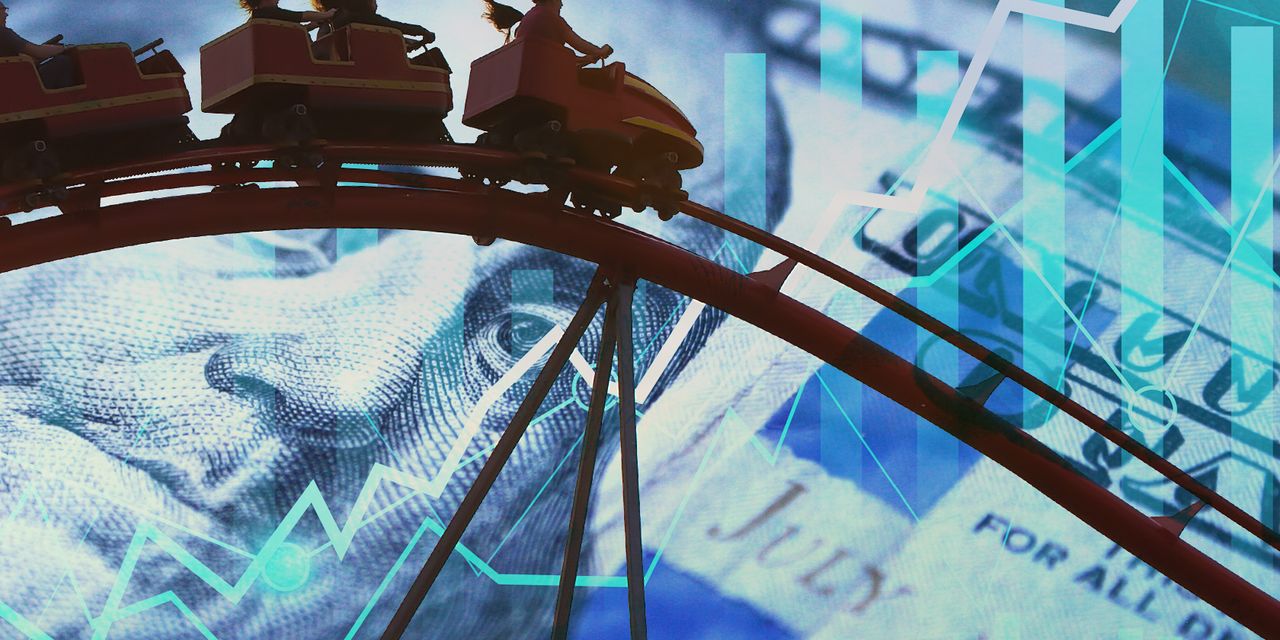The S&P 500 index is on the verge of a fifth straight monthly gain in July. It’s a reality that few on Wall Street expected just eight months ago.
As a result, it seems that one by one, equity analysts at the big banks are issuing mea culpas or tweaking their S&P 500 targets.
With so many reconsidering their assumptions about markets and the economy, one analyst who has been bullish for months sees an opportunity to reflect on what Wall Street got wrong in 2023 — and by doing so, pinpoint potential existential threats to the rally that may lie ahead.
Jawad Mian, a longtime financial markets professional and the founder of Stray Reflections, said professional investors and economists generally underestimated just how resilient U.S. corporations, and U.S. consumers, and the broader U.S. economy would be to higher interest rates. At the same time, they failed to fully appreciate inflation’s ability to boost corporate profits over the long term.
So far, stocks have proved resilient to higher bond yields in 2023, but that doesn’t mean they always will be. Mian believes that rising real yields could eventually push past a “tipping point” that would send U.S. equity valuations sharply lower.
“I think what’s happening is we are collectively discovering how high interest rates can go before the economy breaks,” he said.
“I think the 10-year yield is heading toward 5%. But the nuanced take here is the path higher is not troublesome…however, at some point, we’ll reach a level that’s too much,” Mian added during a phone interview with MarketWatch.
The yield on the 10-year Treasury note
TMUBMUSD10Y,
stood at 3.955% on Friday.
Past the point of no return
The Federal Reserve pushed its policy interest-rate to its highest level in 22 years earlier this week, and further hikes certainly could push long-dated bond yields higher, Mian said. But the blow that drives markets over the cliff could easily come from somewhere else as well.
For example: Foreign investors, particularly those in Japan, could choose to dump U.S. Treasurys now that they’re being enticed by more attractive yields back home.
Investors received a small taste of what this might look like on Thursday afternoon when a headline about the Bank of Japan’s plans to loosen its grip on its government bond market sent the yield on the 30-year Treasury bond
TMUBMUSD30Y,
north of 4%, sparking a selloff in stocks that led to the Dow Jones Industrial Average snapping a 13-day winning streak.
Yields on the 10-year Japanese government bond hit their highest levels since 2014 on Friday after the BOJ confirmed those reports during its July policy meeting.
See: Why U.S. stocks and bonds stumbled on talk of a Bank of Japan policy tweak
Corporate earnings are another puzzle
While it’s important for investors to monitor bond-market threats like this, yields don’t exist in a vacuum. Corporate earnings are another important piece of the puzzle.
Higher yields make bonds more attractive to investors, helping to dim the appeal of stocks, but they also increase borrowing costs for corporations, potentially cutting into profits and pushing companies to lay off employees or enact other belt-tightening measures.
The more pressure companies face from rising borrowing costs, they more likely they’ll need to take more cost-cutting measures like laying off employees.
“Generally speaking, if yields move higher that should put downward pressure on multiples. That’s a risk to the stock market for sure,” said James St. Aubin, chief investment officer for Sierra Investment Management, during a phone interview with MarketWatch.
For now at least, it looks like stocks could continue to ride this wave of momentum higher, even if valuations are looking somewhat stretched relative to recent history already, St. Aubin said. For this to continue though, corporate earnings will need to keep pace with increasingly optimistic expectations.
Already, stock valuations are looking lofty based on the price-to-earnings ratio, one of Wall Street’s favorite metrics for determining how expensive or cheap the market looks.
The forward 12-month price-to-earnings ratio for the S&P 500 index currently stands at 19.4. That’s already higher than the five-year average of 18.6, and the 10-year average of 17.4, according to FactSet data.
Right now, investors are willing to tolerate this because they expect corporate profits to grow substantially in the years ahead, even though profits are expected to contract by 7% in the quarter ended in June, bringing the stretch of negative earnings growth to a third straight quarter.
But in 2024, year-over-year earnings growth is expected to swell to 12.6%. If companies meet, or surpass, these expectations, stocks will likely hold on to their gains, if not continue to climb, St. Aubin said.
However, should earnings growth disappoint, a painful market reckoning might follow.
Since the start of 2023, U.S. stocks have nearly erased all of their losses from 2022, which was the worst year for stock-market performance since 2008, while bonds saw their biggest declines in decades as yields soared driven by inflation and the Federal Reserve’s aggressive interest-rate hikes. Since Jan. 1, the S&P 500
SPX,
has risen 19.3% to 4,582.23, according to FactSet.
The Nasdaq Composite
COMP,
has risen 36.8% to 14,316, while the Dow Jones Industrial Average
DJIA,
is up 7%.
Read the full article here





